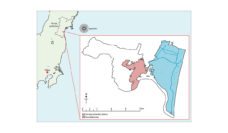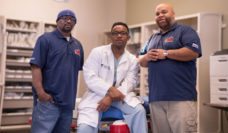Residents of communities that are exposed to mass violence often report negative mental and physical health outcomes in the short and long term. These health problems can include acute stress reactions, post-traumatic stress disorder, major depressive disorder, and substance use. But beyond their effects on residents, these community-wide disasters can also temporarily alter the daily operations of local community organizations.
Some local organizations use their space to take on different responsibilities post-disaster. A good example is when a school becomes a makeshift shelter or when a church distributes blankets, food, or other emergency items. This altruistic “open door” policy happens often in the case of natural disasters, but also occurs following community disasters like bombings or mass shootings. In addition, local community organizations can provide important secondary benefits post-disaster, such as promoting feelings of safety and helping residents gain social capital.
Anecdotal reports of communities after disasters and mass violence events suggest that recovery and resilience efforts are most effective when they include local community organizations. Building upon these insights, our study looked at six different types of organizations to see whether having more of these organizations nearby was associated with resident mental health in the aftermath of the 2013 Boston Marathon bombings. This tragedy served as an unfortunate but unique event to study given the extensive publicity surrounding the bombings and subsequent lockdown, as well as the limited structural damage to the area, which kept local community organizations intact.
The number of organizations near one’s residence was counted at the following spatial boundaries: immediate environment (within ½ mile), proximal environment (1/2 to 1 mile), near-distal environment (1 to 3 miles), and distal environment (3 to 5 miles). We surveyed a representative sample of almost 800 Boston metropolitan area residents shortly after the bombings and followed participants for two years.
Anecdotal reports of communities after disasters and mass violence events suggest that recovery and resilience efforts are most effective when they include local community organizations.
Our findings indicated that having more safety-based organizations in one’s immediate or proximal environment was associated with Boston residents’ reports of heightened acute stress, functional impairment, and psychological distress shortly after the bombings and up to two years later. However, having more safety-based organizations further out (in the near-distal environment) was associated with a decrease in psychological distress two years later.
Having more health-based organizations in the near-distal environment was associated with higher acute stress scores in the short term. Yet having more of these organizations close by (proximal) was associated with reduced fears and worries two years later.
For voluntary community organizations, having a greater number of organizations nearby (proximal) was associated with decreased fears and worries two years after the bombings. Finally, having more child- and family-promoting organizations or voluntary community organizations within a 1-mile area, and being directly exposed to the bombings or being exposed to previous community traumas (e.g., the 9/11 terrorist attacks), was associated with better short-term mental health outcomes.
An event like the Boston Marathon bombings can highlight the strength of a community along with its residents (“Boston Strong”). Our study connects community entities or organizations with individual responses to this devastating event to find that in the short-term, having certain organizations in one’s community can be distress provoking. However, over the long-term, with a bit of distance, organization proximity and concentration are associated with positive resident mental health responses. More research and attention should be directed at bolstering community resources that promote healthy communities and residents in the aftermath of mass violence.
Photo by Jamison Lottering on Unsplash















